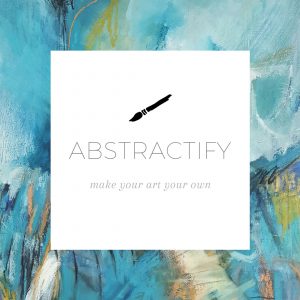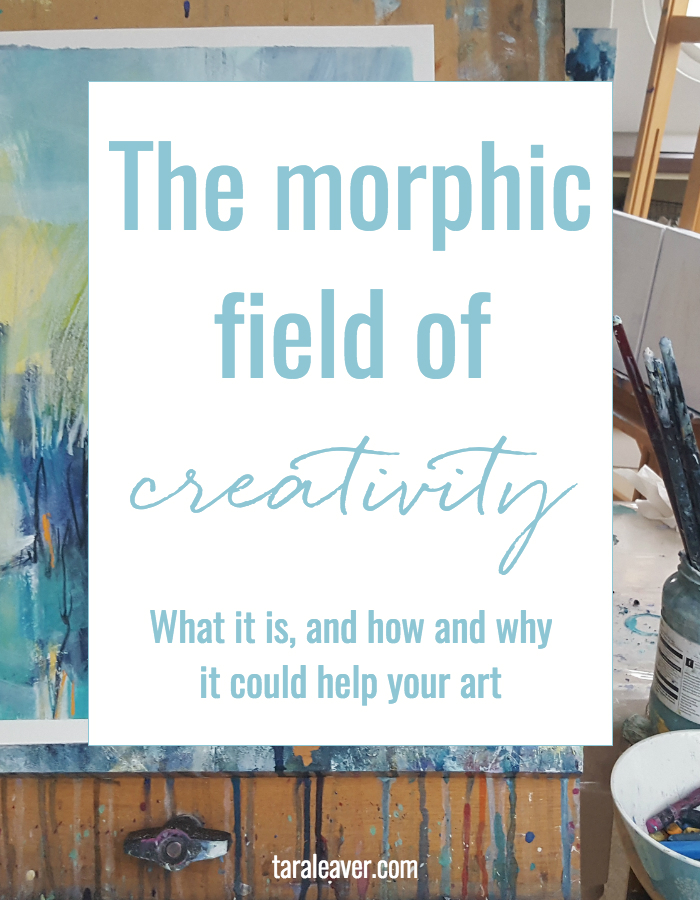When I was looking for a new home a few years ago, I had specified a two bedroom flat, so I could use one of them as a studio. I looked at a lot of ok-to-not-quite-to-no-good-at-all places, and then one morning the estate agent rang me all excited about a flat I ‘had to see’.
It ticked almost every box on my {long!} list of essential criteria – sea view, outside space, spacious and light, high up – but it also had one thing it had never even occurred to me to ask for – a studio.
The whole top floor, originally the attic, had been converted by the previous owner into a dedicated art studio, complete with butler’s sink, a wall of skylights, storage, and portholes. Because all art studios should have portholes.
Total no brainer right? Somehow I managed to dither over it, because it wasn’t in the area I’d envisaged living and was right at the top end of my budget, but then I got over myself and after the usual nerve-wracking process, moved in one chilly December day.
Obviously I put the studio into service right away. I’d never had such an incredible space to make my art in all to myself, and it would’ve felt like sacrilege to not make the most of it. I remember the first painting I made there. It was one of those weird ones that don’t bear much relation to any others, more of an in the moment expression than a complete painting.
How my art changed
Since then, my work has been slowly becoming an ever truer expression of me. I’ve been dithering and doubting less; the lessons I’ve learned in the decades since the first art lessons at school – things like composition and values – seem to have settled into my bones and become background rather than things I have to think about.
Gradually my ‘use all the colours and jump randomly between subjects and styles’ approach began to refine, the work became more expressive, more of a direct download than something I ‘thought up’.
Would this have happened in a spare room? Maybe. And not for a moment am I suggesting that to make your best art you need a dedicated studio. But I have a theory about what has happened here.
A bit of science
Rupert Sheldrake is a biologist and author {and apparently a ‘scientific heretic’ – awesome} known for his work with morphic fields and morphic resonance. Since I’m hopeless at explaining science, I’ll leave it to him:
“Morphic fields are local and and are within and around the systems they organise. An oak tree’s fields are within and around the tree. When it dies, they disappear from that place. But the oak’s fields can affect other oak trees by morphic resonance, even after it is dead. Morphic resonance involves a transfer of information across space and time from the past to the present. The source of the resonance is in the past. The hypothesis is that similarity with an organism in the present enables this resonance to occur.”
{My emphasis.}
Maybe it’s a stretch for me to suggest that using an art studio created by and inherited from another artist is a way of experiencing and contributing to a ‘creative morphic field’. But if you’ve ever worked in a dedicated studio space, through which hundreds of other artists have passed, you will know that feeling they carry. As if every artist who has worked there left a little artistic residue, which grows over time and creates an atmosphere and direction for those to come.
All I know is that the studio upstairs in my home carries a strong creative energy, and I think that’s not just because it’s designed specifically for that, but because two working artists have now used it over a long period.
The case for building your own creative morphic field
Lots of us have to make do with a temporary space on the dining table, or the corner of a room, especially in the early days of making art. I started on my bedroom floor. That often means sharing your energetic space with other people and/or other activities.
There’s nothing wrong with this, and often it’s the only option for a while, but I’m starting to think that if you’re really serious about your art – and by serious I mean you acknowledge it as an essential part of your life, like eating – it’s worth looking for ways to dedicate a space that can start to establish its own morphic field.
Think about it; if you had a space just for your art, you’d know that being in that space meant opening up that part of yourself, and over time it would start to become automatic. The more you time you spent there, the easier it would become to slide into that zone and make your art, and to develop it in a way that’s most true to you.
It’s like whenever you spent time there you’d be building something invisible that stayed even after you’d left to do something else, and would be there waiting for you on your return. In fact, for me, opening up that channel means that inside myself I’m in that space all the time, whether I’m making art or not.
Creating a morphic resonance for your art practice starts to build a {nebulous, invisible, but very real} foundation. It supports you in a way that a space you have to set up and dismantle every time doesn’t. It automatically trains your mind and body {and quite possibly your muse!} to show up whenever you go to make art, thus removing one barrier to entry that many find difficult.
What do you think? Have you experienced this morphic field when it comes to creating? What could you do to encourage it in your own creative space? Please feel free to share your thoughts in the comments!
 One way to create a morphic field of creativity is to gather with others on a similar path for a specific time. And because energy is not bound by space, it means we create a morphic field when we gather to take an online course together, wherever we are in the world. Which makes the creative energy that much more powerful.
One way to create a morphic field of creativity is to gather with others on a similar path for a specific time. And because energy is not bound by space, it means we create a morphic field when we gather to take an online course together, wherever we are in the world. Which makes the creative energy that much more powerful.
Abstractify, a course dedicated to uncovering and developing your unique style as an artist, runs every January. Click the image on the left to learn more about it and sign up for news of the next session.








I was always the first person to convert a room into a studio/office so I can’t say I’ve ever experienced what you’re talking about… And I’m wondering if the fact I do my professional work, as well as personal art, in the same physical space is in any way detrimental to my art.
I recently started working in our bedroom because it’s much lighter and more spacious, and I’ve enjoyed my time there immensely. I attribute that to the physical qualities of the space.
Just seeing the Instagram photos of your studio creates an itch to go paint 🙂
What about when you’ve done courses or classes at university/college etc? I doubt very much the different types of work affect each other in a negative way; it’s all creative, even if in different ways. 🙂
How interesting! For some years I used a beautiful gazebo with 5 sliding glass doors, trees all around, an inspirational oasis. Now my artistic energy is with me in a smaller area. However, the energy has evolved or morphed to flow through me in the space I have, thankfully.
That sounds amazing Sally! And I think you make a good point; since it’s us who bring the field to the space, we can also take it with us.
Yes I have and do experience this morphic field every time I go to my studio, it’s like putting on a comfortable old coat. Perhaps it’s just the familiarity of place , however, I am intrigued by the scientific explanation.
Neal,
p.s. Love your site
Yes I know that feeling of comfortable-ness. 🙂 I do love it when science backs up what we feel to be true but can’t necessarily explain! And thank you!
Definitely a vibe for me from the online art (Abstractify!) and songwriting groups. While I have an indoor space, sort of, I paint outside when I can. The place I felt most morphic has been going to songwriting/music camp for a week.
Love that idea of ‘feeling morphic’. 🙂 I have to say the in person element has been most powerful for me too in some ways.
I finished setting up my hobby room/art studio a few months ago, and it definitely has a different feeling than when I was painting on the dining room table. Knowing that I can just leave everything where it is, not having to pack it up sooner or later to do other things with the space. It’s a feeling like I and my art belong. I hope it will increase as I use it over the years.
I get incredibly inspired whenever I visit an art gallery — I wonder if that’s a morphic thing too?
Hi Katie! That sounds very morphic to me. 😉 And great point about galleries – I would say yes! Perhaps it’s more of a ‘receptive’ than creative field, since people go there to look and experience rather than create. All comes to the same thing in the end though if you go home inspired!
For the first time in my life I have a dedicated space I call my studio, we are in a rented house while we wait for a new one my husband will build … I am almost 75 and I have to say I LOVE going in there it’s basically a covered space between two extensions, but I have a table and can leave all my ‘stuff’ out if I need to. Am finding that it’s very inspiring and am producing more than I ever have before, so I guess I am creating a morphic space – am I right ?
According to my very scientific findings, definitely yes. 😉